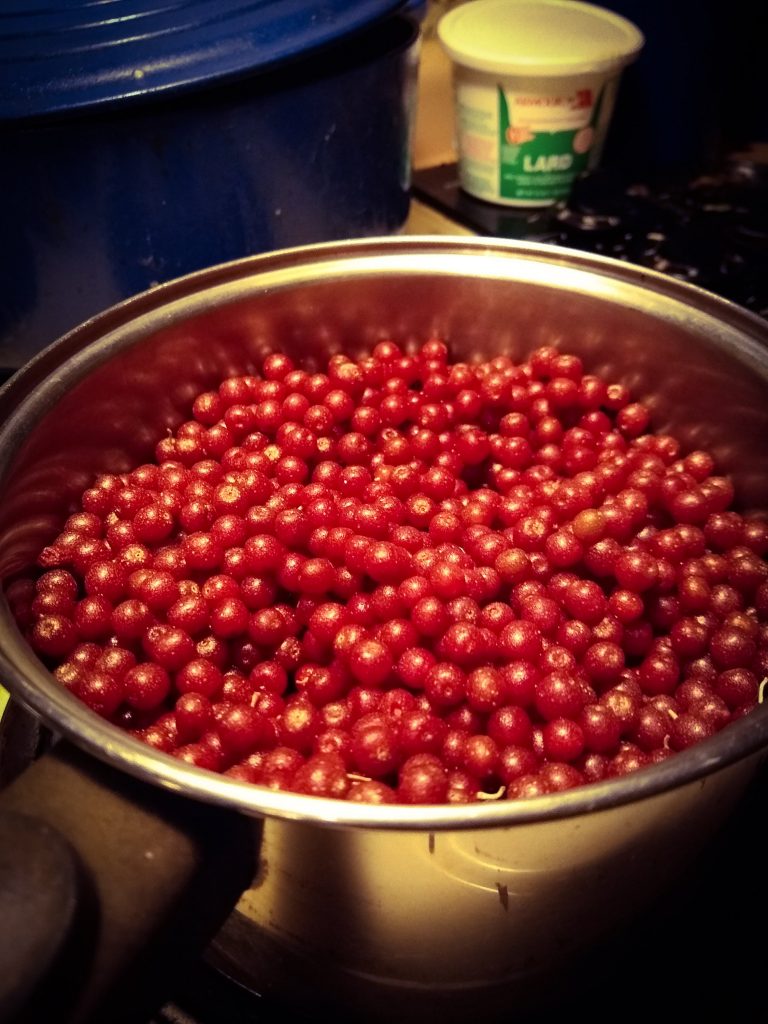Autumn olive (Eleagnus umbellata) is one of our favorite things to forage and also one that we get the most of. This small tree isn’t native to North America, but it’s spread to a lot of the continent. Due to its fast growing and nitrogen fixing qualities, it’s been used for erosion control as well as decorative landscaping and, of course, food.

The berries can vary a fair bit in taste but overall tend to be both sweet and sour like a green apple, often with a bit of astringency. They contain several times the concentration of lycopene as tomatoes do, and can be used for preserves, sauces, fruit leather, or eaten raw (preferably in copious amounts), just to name a few ideas.
Here in our area (southern “New England”, zone 6b) the first of ours are just starting to ripen enough to pick. You can identify them by looking for the red berries with small silver specks on them, and the leaves have a silver underside that apparently resembles that of olive leaves (hence being called “autumn olive” even though it’s not an olive).

Being invasive to some degree, one doesn’t need to be concerned about over harvesting, and it’s probably in the best interest of your landbase to keep as many seeds from turning into trees as possible. While there’s plenty of room for debate as to just how invasive it is and if it actually causes damage, for our purposes that just means there’s plenty for everyone.
Remember, if you’re unsure about identifying a potential food, wait until an experienced forager can confirm it for you.
If you like what I’m doing here and want to make sure I can keep doing it, please consider supporting these projects financially. It sucks, but until capitalism isn’t a thing there are bills to pay.
Support the cause at:
@theresistancegarden on Venmo
$theresistancegarden on CashApp




Where are you located? I’m also an autumnberry forager, living in Southern MA, and would love to compare notes.